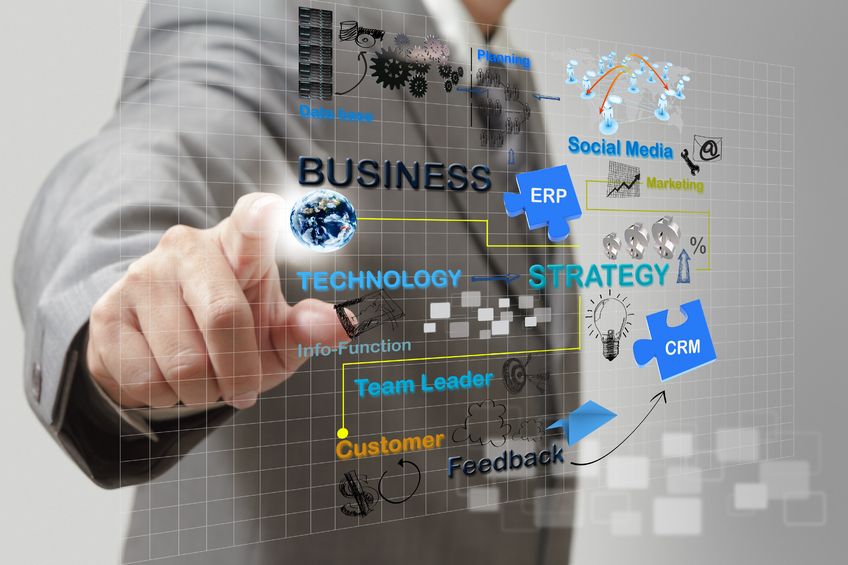You know that technology is vital for the success of your growing company. Each savvy business owner recognizes that fact. But we’re not all well-versed in the details of hardware, software, firmware, middleware, or the other -wares out there.
It’s essential to have a good IT staff. And for a little extra support, Kate Smith of SecurElement Infrastructure Solutions has written about some common problems. The five guidelines she suggests can help you lead your small or mid-sized business to a solid technology strategy.
Price Shopping
No one will deny that your budget is a central factor for making decisions (jokes about Congress aside). However, when it comes to the tools your team will be using every day, pricing should not be the *only* criteria. Focusing too early on dollar amounts can create a dangerous case of expense-myopia (or perhaps terminal sub-expenditure-opathy).
Related to this concern, astronaut John Glenn’s memoirs put the issue into dramatic perspective. While waiting in a small capsule on the top of a 90-foot tall Atlas rocket, he describes his state-of-mind: “I felt exactly how you would feel if you were getting ready to launch and knew you were sitting on top of two million parts — all built by the lowest bidder on a government contract.”
Of course, your staff won’t be riding into orbit on a controlled explosion, but that doesn’t mean each customer interaction isn’t valuable. Your team should feel confident in accessing needed information and comfortable in knowing that the technology is going to facilitate solutions, not aggravate people. You don’t want the lowest off-the-shelf price to gradually snowball into much more expensive problem.
This isn’t to say that product costs have no place in tech decisions. They do set a ballpark for your tech research. And after you’ve identified multiple, high-quality tech solutions — each of which meets all your company’s needs — then the sticker price can be helpful for the final decision.
Reactive Technology
This is a variation of the shortsightedness discussed above, but this type focuses less on price and more on functionality. In short, a business owner might feel that as long as the current technology is more or less functional, then there’s no reason to change it. This implies there’s no need to explore upgrades unless the system breaks down.
You can see the problem here. When the CRM system goes down (or the ERP suite or your accounting software), that segment of the company will grind to a halt. When things slow to a crawl, that will affect your customers. When your clients lose time (and maybe money), they will also lose trust.
Instead of operating in a reactionary mode of putting out crisis-fires, a strong technology strategy will acknowledge that computers and applications are not a one-time purchase. Technology depreciates, but it also evolves and improves. A better mindset is to plan on proactively optimizing your systems at regular intervals. With this approach, you can plan when there will be downtime, notifying customers in advance, building trust as you take care of their long-term interests.
Untested Backup and Recovery
Even if your systems are optimized, disruptions outside your control can impact your business. We plan for these contingencies, but having a plan is only part of the solution. Your ability to execute on that plan is pivotal. And the only way to verify or measure that ability is to test it.
A full-fledged backup plan will account for both the physical and virtual resources. After making necessary precautions, it can be very enlightening to turn off the power— does the backup system kick into effect like planned? Is your hardware kept stable? Is the data protected? A common theme today is that cloud-based systems are the fail-safe for business data. But what happens when the cloud hosting fails? And just as important, how quickly can you get your operations back onto stable footing?
Office Isolation
If you maintain strict business hours, it should be a conscious decision, not the accidental side-effect of walking through a certain set of doors. Likewise, if you need to finish a project, your technology strategy should enable you to accomplish that work from another location. Contemporary tools are geared for mobility and connectivity. We all appreciate the quick responsiveness our favorite companies provide for us — will your customers feel any different?
Second String QB
Your technology strategy needs to include people. In a smaller company with fewer staff, each member of the team carries more responsibilities. It can be tempting to assign all the network, infrastructure, and software duties to one person. That might be a lot of hats, but at least it’s all under the same umbrella. Whether it’s someone else on your staff or an out-sourced specialist, knowledge of how to run back-ups needs to be backed up too. In a similar way, if you have found the value of custom-made applications using platforms such as FileMaker, multiple team members should have experience with and access to the development resources. This type of cross-training helps ensure your growing company will be as resilient as possible.
Resilience is a good goal for any technology strategy. It brings attention to the reality that no SMB can solve all tech issues with a single purchase. Creating an optimized infrastructure and software tools is an ongoing process. With a clear plan, you can feel confident that you’re moving your company in the right direction each day.
Some of these guidelines may seem like common sense after they’ve been pointed out. That’s often the case with good advice. Another rule of thumb is that your technology tools should work together effortlessly. The best way to implement this principle, of course, is for the tools to be from a single suite. aACE 5 is a comprehensive business software package that can eliminate friction in your company’s digital tools. From quote to cash, aACE covers your needs for ERP, CRM, accounting, inventory management, shipping and receiving, plus more. This best-of-breed software can maximize your business velocity.
“I would recommend aACE to anyone who wants to eliminate their time spent troubleshooting problems with other programs. We have twelve users and a day doesn’t go by that someone doesn’t comment on how much they appreciate this program.” – Claire Wade, Director of Operations, Skip Gambert & Associates




